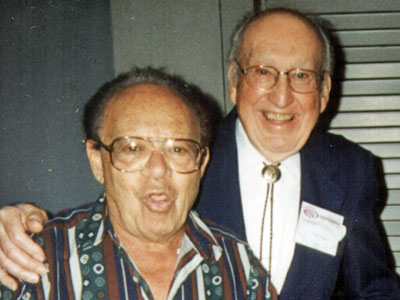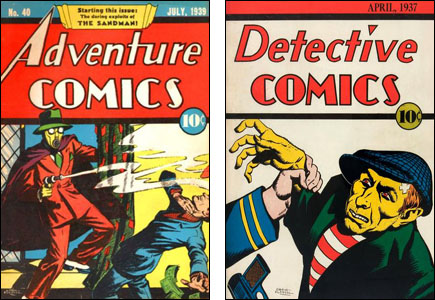
Creig Flessel, a pioneer artist of comics, has passed at the age of 96. He had suffered a stroke recently and that's all we know about the cause of death.
Flessel was born February 2, 1912, in Huntington, Long Island, New York, the son of a blacksmith. He attended Alfred University in New York, which is where he met the future Mrs. Flessel, graduating in 1936. One of his classmates, he always noted with pride, was Charles Addams.
His first job in comics was assisting cartoonist John H. Striebel on the newspaper strip, Dixie Dugan. This also brought him a career in advertising art, as Streibel was doing a lot of it at the time, mostly featuring the characters from the radio show, Vic and Sade. Over the years, Flessel would bounce back and forth between the two fields: When he wasn't doing comics, he was drawing for advertising, primarily for the Johnstone-Cushing agency. Over the decades, he did thousands of magazine ads and commercial storyboards, primarily but not exclusively in comic strip form.
His non-advertising cartoon appeared over the years in publications as diverse as Boy's Life and Playboy, but it was his work for the early DC Comics that made the most history. His first work for them appears to have appeared in More Fun Comics #10, cover-dated May of 1936. He drew a strip in the first issue of the historic Detective Comics and drew the covers for issues #2-17, along with many other covers for early DC titles. His work also appeared inside many comics for the firm, and he drew many stories of the Sandman in Adventure Comics, and created a character named The Shining Knight, who appeared in the same title.

In 1940, DC editor Vin Sullivan moved over to the newly-formed Columbia Comics, and Flessel began to freelance for him there, as well. In 1943, Sullivan formed his own company, Magazine Enterprises, and Flessel signed on as associate editor. He returned from time to time to DC, drawing for them again briefly in 1949, in the late fifties (mostly as an inker on Superman-related comics) and then in the early seventies, he worked on comics that Joe Simon was editing for the firm, including Prez.
All this time, he was primarily engaged in advertising art, though he occasionally assisted Al Capp on the Li'l Abner newspaper strip and from 1960-1971, he drew another strip, David Crane, which he took over from J. Winslow Mortimer. The National Cartoonists Society honored him in 1992 with its Silver T-Square Award for extraordinary service and the Cartoon Art Museum in San Francisco and Jeanne Schulz honored him just last year with the Sparky Award, named for Jeanne's late husband, Charles Schulz. Creig was also a nominee for this year's Hall of Fame Award at the Comic-Con International.
In 2000, he and his wife Marie (yes, the spouse he met at Alfred University) moved from the East Coast to a home in Mill Valley, California to be closer to their son Peter and several grandkids. (They also had a daughter, Eugenie, who followed in Dad's footsteps by becoming a successful illustrator.) Creig never stopped cartooning and was often a guest at comic conventions, where I had the pleasure of interviewing him and chatting on many occasions. He was a delightful man who acted like you were doing him a favor to ask for an autograph or to pose some question about his long, long career. Condolences to his family and also to us, his friends and fans.